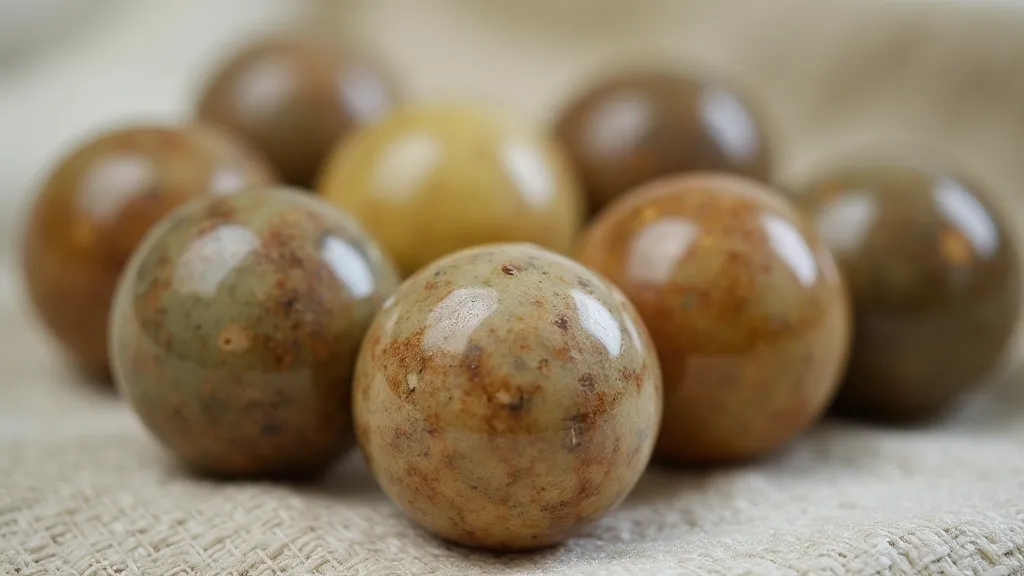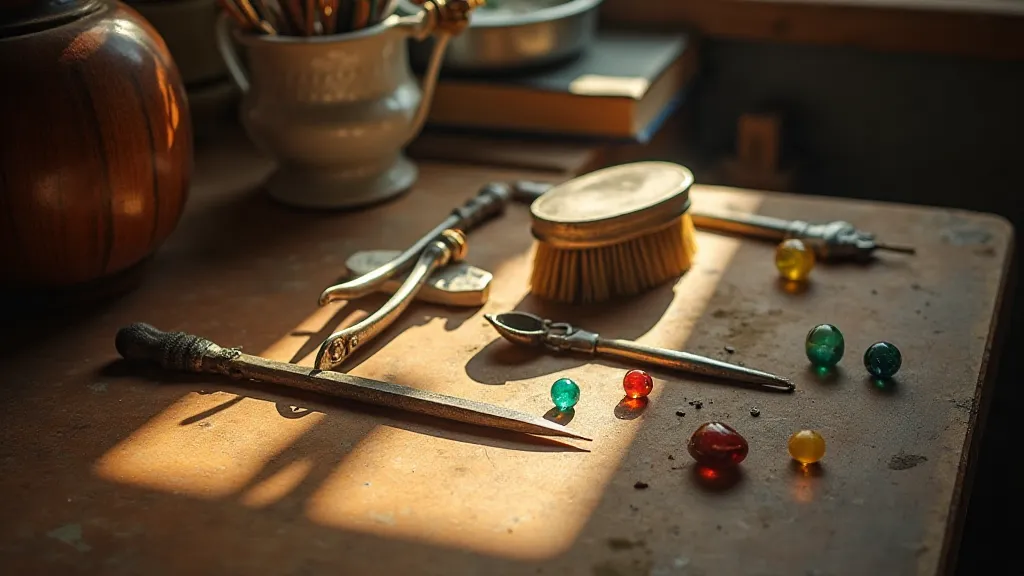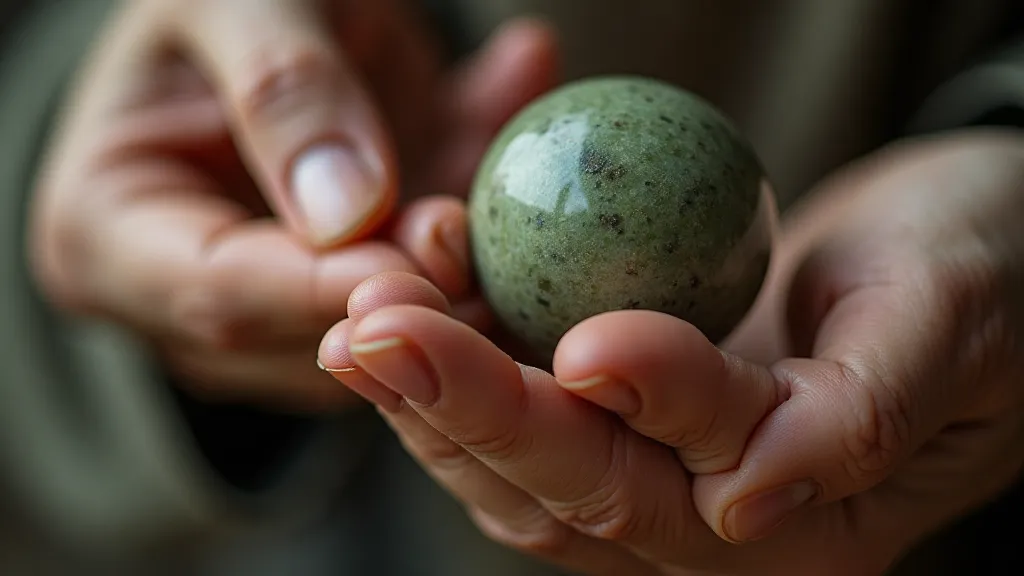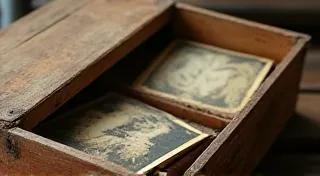The Alchemist's Palette: Understanding Color Shifts in Sulphur Marbles
There's a quiet magic held within antique marbles. It's not the flash of a perfectly swirled end-of-day design, nor the thrill of discovering a newly recognized variety. It’s something deeper, something that whispers of time and chemistry: the subtle, often surprising, color transformations found in sulphur marbles. These aren’t simply marbles; they’re tiny capsules of history, slowly revealing their secrets over decades – even centuries. Collecting antique marbles isn’t just about acquiring objects; it's about connecting with the hands that made them, the children who played with them, and the slow, relentless passage of time.
My own journey into the world of marble collecting began with a dusty box at an estate sale. Amongst the chipped porcelain dolls and yellowed photographs, I found them: a handful of sulphur marbles, initially a dull, brownish hue. I remember being disappointed; they lacked the vibrancy of the other marbles I’d seen. But something about their muted character, their quiet dignity, resonated with me. Little did I know, those seemingly unremarkable marbles held within them a story far more captivating than any dazzling swirl.

The Chemistry of Change: Sulphur, Iron, and Oxidation
Sulphur marbles, as their name suggests, are predominantly made of sulphur, often combined with other materials to improve workability and durability. They were commonly produced in the 19th and early 20th centuries, particularly in Germany and the United States, where sulphur was readily available. While sulphur itself is typically a bright yellow solid, the marbles we encounter today rarely retain that original hue. This is due to a fascinating process of chemical reaction and aging.
The primary culprit in the color shifts of sulphur marbles is oxidation. When exposed to air and moisture, sulphur reacts with iron, a common impurity found in the raw materials. This reaction forms iron sulphides, compounds with varying colors depending on their composition and hydration level. Pyrite (iron pyrite), a well-known iron sulphide, often appears as a brassy yellow but can also manifest in darker shades. Other iron sulphides, like pyrrhotite and greigite, contribute to the range of brown, green, gray, and even black tones that characterize aged sulphur marbles.
The presence of other metals, like copper or manganese, can further complicate the color palette. These trace elements can interact with sulphur and iron, creating unpredictable and often beautiful color combinations. The environment in which the marbles are stored – humidity, temperature, exposure to light – also plays a crucial role in the rate and nature of these chemical changes. A marble stored in a damp basement will likely exhibit a different color profile than one kept in a dry, well-ventilated room.
Identifying Sulphur Marbles: Beyond the Basic Hue
Identifying sulphur marbles isn't always straightforward. Their altered colors can easily be mistaken for other types of marbles, like those made from common clay or even some early glass marbles that have suffered from weathering. However, there are key characteristics that can help differentiate them.
Firstly, the overall density. Sulphur marbles are generally denser than clay marbles, though less dense than most glass marbles. A simple test involves comparing their weight when held in your hand. Secondly, the surface texture can provide clues. Sulphur marbles often exhibit a slightly grainy or powdery texture, especially if they’re significantly altered. This is due to the formation of iron sulphides on the surface.
Thirdly, a close examination of the color. While the exterior color may be brown or gray, a careful inspection often reveals hints of the original yellow sulphur within the marble’s core. This “ghost” of the original color is a strong indicator of its composition. Finally, a simple scratch test (performed with extreme caution!) can sometimes reveal a faint yellow residue, further supporting the identification. Remember, preservation is paramount. Avoid harsh chemicals or aggressive cleaning methods, as these can damage the marble’s delicate surface.
The rarity of certain color variations adds to the allure of collecting sulphur marbles. Deep green or black sulphur marbles are significantly rarer than the more common brown and gray examples, commanding a higher value in the collector's market. Understanding the science behind these transformations isn't just about identification; it’s about appreciating the complex interplay of chemistry and time that has shaped these miniature treasures.

The Collector's Eye: Preservation and Appreciation
The beauty of collecting antique marbles lies not just in acquiring rare specimens, but in understanding their history and appreciating the craftsmanship that went into their creation. Sulphur marbles, with their ever-changing colors and intriguing chemistry, offer a unique opportunity to connect with the past on a deeper level.
Proper storage is crucial for preserving these fragile treasures. A cool, dry environment, away from direct sunlight and extreme temperature fluctuations, is ideal. Individually wrapping marbles in acid-free tissue paper can help protect them from abrasion and prevent color transfer. Avoid displaying them in areas with high humidity, as this can accelerate the oxidation process.
Restoration is generally discouraged for antique sulphur marbles. While cleaning may be tempting, aggressive methods can easily damage the delicate surface and alter the natural patina that has developed over time. The color changes themselves are part of the marble’s history; they tell a story of time and transformation.
I recall offering advice to a newer collector once, who was frustrated by a marble’s darkening hue. I told him, “Don’t see it as a flaw; see it as an evolution. The marble is revealing another layer of its story.” He paused, looked at the marble, and a smile slowly spread across his face. That, I realized, was the true essence of collecting antique marbles: not just possessing objects, but appreciating the stories they hold.

Beyond the Color: A Legacy in Miniature
The study of sulphur marbles provides a fascinating glimpse into the history of manufacturing, chemistry, and even childhood games. These small, seemingly insignificant objects offer a tangible link to the past, a reminder of the ingenuity and resourcefulness of generations gone by. As collectors, we have a responsibility to preserve these treasures, to share their stories, and to ensure that they continue to inspire awe and wonder for years to come. The Alchemist’s Palette, as it were, continues to shift and reveal its secrets, rewarding the patient observer with an ever-deepening appreciation for the beauty and complexity of the antique marble world.





